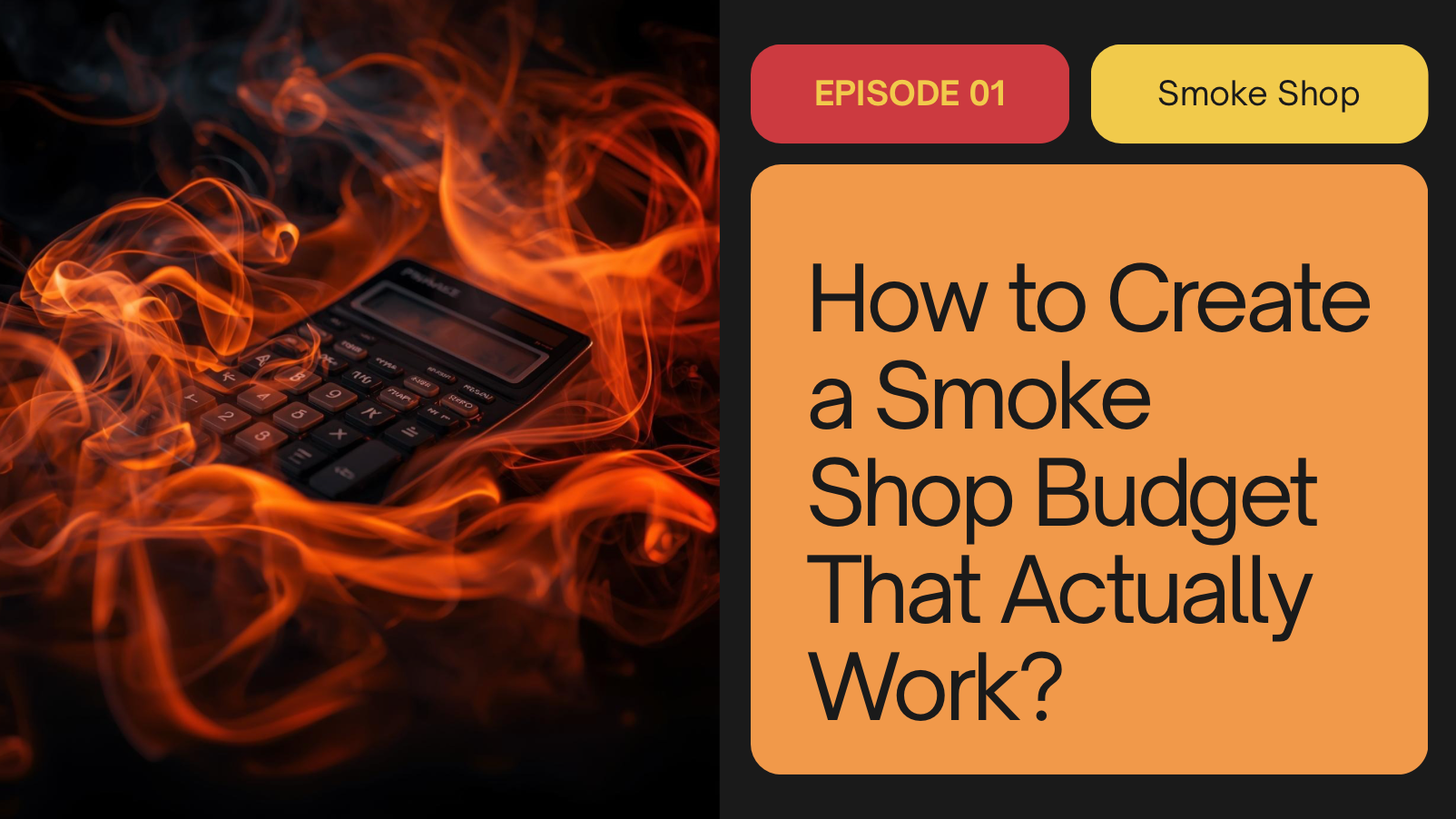Most smoke shop owners think a “budget” is optional—something you do once in January, then ignore until tax season. That’s why their cash flow is a mess, their bills pile up, and they’re constantly chasing sales just to keep the lights on.
Here’s the no‑BS truth: a budget is the backbone of your business. Without one, you’re not running a shop—you’re gambling. A proper budget tells you exactly how much you can spend, when to spend it, and where your money is actually going. It forces discipline. And discipline is what separates profitable shops from the ones that shut down in two years.
Let’s break down how to build a smoke shop budget that doesn’t just sit in a folder but actually guides your decisions every day.
Step 1: Know Your Numbers First
You can’t build a budget out of thin air. You need real numbers.
What to pull before building a budget:
-
Last 6–12 months of sales revenue.
-
Cost of goods sold (COGS) broken down by category.
-
Overhead (rent, utilities, insurance, licenses).
-
Payroll.
-
Marketing expenses.
-
Miscellaneous recurring costs (subscriptions, software, cleaning).
Action: Pull bank statements and POS reports. If you can’t track this, you don’t have a business—you have chaos.
Step 2: Separate Fixed vs. Variable Costs
Every expense isn’t created equal.
-
Fixed costs: Rent, insurance, certain licenses. These don’t change month to month.
-
Variable costs: Inventory, payroll, utilities, marketing. These shift based on sales and season.
Why this matters: You always know your fixed costs. Your variable costs need to flex depending on sales. This keeps you from overspending during slow months.
Step 3: Budget Inventory the Smart Way
Inventory is your biggest expense—and your biggest trap. Too many owners blow their budget loading up on product that sits on shelves.
Rules for inventory budgeting:
-
Set a percentage of revenue (usually 30–40%) for COGS. Stick to it.
-
Prioritize fast movers. Don’t sink cash into slow movers.
-
Rotate stock monthly. Dead product kills your budget.
-
Only buy “deals” if they fit into your set percentage.
Inventory discipline keeps your cash free for payroll, bills, and growth.
Step 4: Cap Payroll Before It Eats You Alive
Payroll should never be a mystery number. You need to set a cap.
-
Industry standard: 15–20% of revenue.
-
Staff smart—don’t overpay for slow shifts.
-
Reward high performers, not warm bodies.
-
Cross‑train so fewer employees cover more ground.
When payroll creeps above budget, profit disappears.
Step 5: Budget Marketing Like an Investment
Marketing isn’t “whatever’s left over.” It’s part of the plan.
-
Healthy range: 5–8% of revenue.
-
Focus on ROI—not likes or followers.
-
Double down on what brings sales (Google Business, local SEO, loyalty programs).
-
Cut anything that doesn’t produce results within 60–90 days.
If it doesn’t put customers in your shop, it doesn’t belong in your budget.
Step 6: Plan for Emergencies
Shops that don’t budget for emergencies fold the first time something goes wrong.
-
Equipment breaks.
-
New tax or compliance costs show up.
-
A slow month wipes out cash flow.
Budget rule: 5% of monthly revenue goes into an emergency fund. No excuses.
Step 7: Track Monthly, Adjust Quarterly
A budget isn’t set in stone—it’s a living tool.
-
Review actual vs. budget monthly.
-
Ask: Did you overspend on payroll? Did COGS creep up?
-
Adjust categories quarterly based on real performance.
Your budget should guide decisions in real time—not sit untouched.
Step 8: Enforce Profit First
Too many owners treat profit like leftovers. Wrong.
Use the formula:
Sales – Profit = Expenses.
Sales – Profit = Expenses.
That means you decide the profit percentage upfront (10–15%), pull it out first, and run the shop on what’s left. This guarantees you actually keep money instead of hoping there’s some left at the end.
Step 9: Use Your Budget as a Decision Filter
Every expense should be filtered through your budget.
Ask:
-
Is this expense already accounted for?
-
Does it fit within the category cap?
-
Does it drive revenue, protect the business, or grow profit?
If not, it’s waste. And waste doesn’t belong in your shop.
Step 10: Keep It Simple
Don’t overcomplicate your budget with 50 categories you’ll never track.
Focus on the big levers:
-
Revenue
-
COGS
-
Payroll
-
Overhead
-
Marketing
-
Emergency/Profit
If you master these six, your shop stays lean, healthy, and profitable.
Final Word
A budget isn’t sexy. It’s not neon lights or fancy displays. But it’s what keeps your doors open, your bills paid, and your profits real.
Most shops fail not because of low sales—but because of sloppy budgeting. If you don’t tell your money where to go, it disappears. Simple as that.
Get disciplined. Build a budget, enforce it, adjust it, and use it as a filter for every decision. Do that, and you’ll stop running your shop like a hobby and start running it like the profitable business it’s supposed to be.

